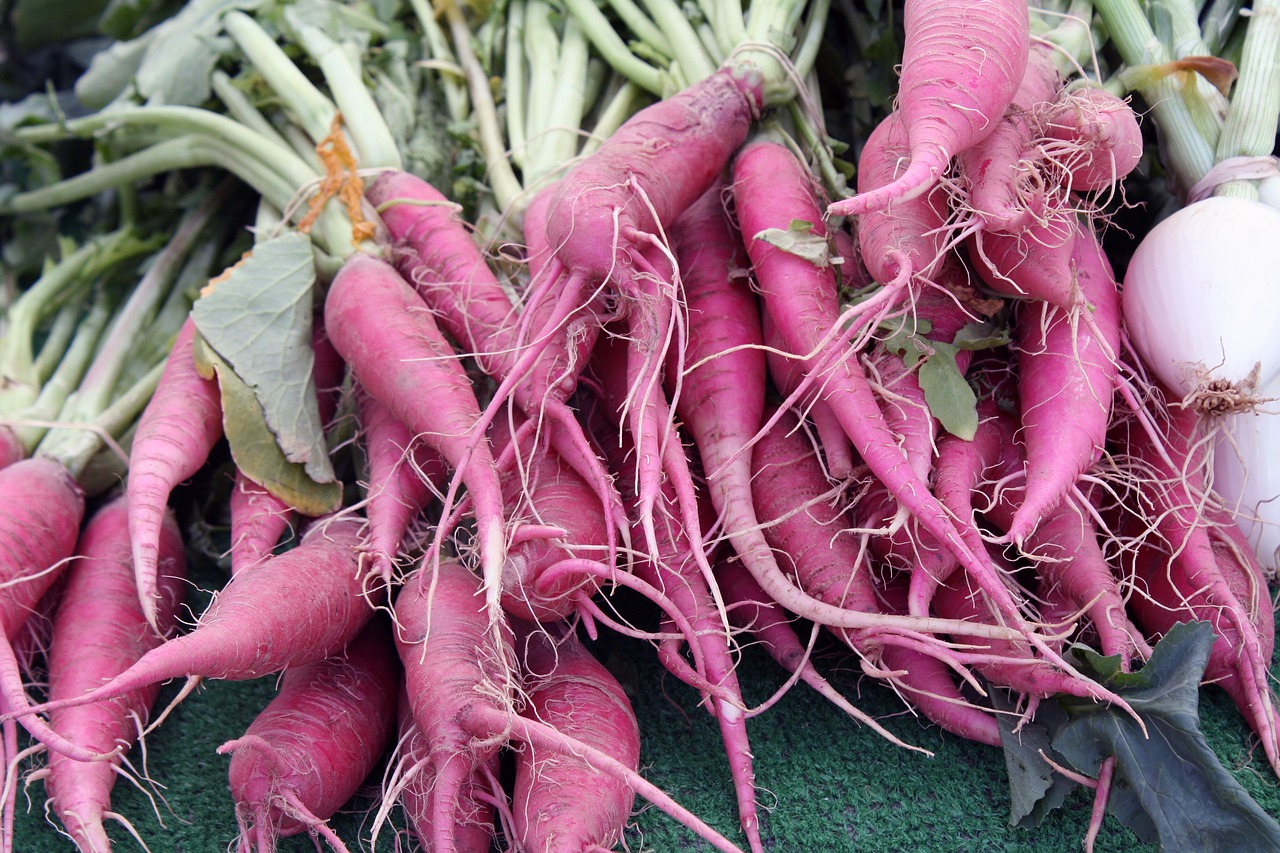
Growing Daikon Radish in the Garden, Pot & Raised Bed
Daikon is a great vegetable that has been cultivated by humans for many thousands of years. Its pungent flavor makes it a great taste experience. Whether summer or winter radish, you can enjoy the root regionally all year round. Find out everything you need to know about sowing, caring for, harvesting and storing radishes here. You can also find out how to propagate daikon and how to deal with the most important daikon diseases.
This Article Contains:
- Growing Daikon Radish: What You Need to Know
- The Right Location and Soil
- Daikon Species and Varieties for the Garden and Raised Beds
- Good and Bad Companion Plants
- Mixed cultivation with radish: examples & ideas
- Sowing Daikon Radishes: Tips for Sowing
- The Right Care and Fertilization
- Harvest Time: How to Harvest Daikon Radishes Correctly
- Propagate Daikon Radish: Obtaining Seeds
- Diseases and Pests
- Frequently Asked Questions About Daikon Cultivation
Quick Overview
Growing and Planting Daikons: The Most Important Facts at a Glance
- Light: sunny to semi-shady
- Water requirement: ensure even soil moisture
- Nutrient requirements: medium (medium feeder), risk of nitrate accumulation with excess nitrogen
- Soil: prefers sandy, loose soil with a high humus content
- Germination temperature: at least 14 °C/57.2 °F
- Planting depth: 2 - 3 cm/0.8 - 1.2 in
- Planting distance: 10 - 15 cm/3.9 - 5.9 in
- Row spacing: 25 - 30 cm/9.8 - 11.8 in
- Good companion plants: collard greens, cauliflower, beans, peas, strawberries, kohlrabi, cress, chard, carrots, oregano, pak choi, parsnip, postelein, Brussels sprouts, salsify,...
- Bad companion plants: cucumbers, chervil, lovage, turnip, horseradish, rocket, redicchio,...
Growing Daikon Radish: What You Need to Know
It is not yet clear exactly from which wild form the garden radish we use originates. It is currently assumed that the beach radish (Raphanus maritimus), which is native to the eastern Mediterranean, could be the source. Cross-breeding with other wild forms from East Asia could have given rise to today's daikon. Daikons have been cultivated there for thousands of years. In Germany, daikons and radishes were probably already being cultivated in the Middle Ages, at least Hildegard von Bingen mentioned them in her records. The mustard oils contained in the mustard family give it its hot and spicy taste.
The Right Location and Soil
Daikon prefers to grow in full sun locations. In places that are too shady, the daikon quickly begins to bolt, which means that flower heads are formed and the root becomes woody and puny. The soil should be deep with a loose soil structure so that the roots can spread. A high humus content keeps the soil evenly moist. Calcareous and dense clay soils are unsuitable for daikon cultivation as they make root growth more difficult.
Daikon Species and Varieties for the Garden and Raised Beds
Like cabbage and radishes, winter radishes belong to the cruciferous family (Brassicaceae). Within this family, they form their own plant genus called Raphanus. Botanically, winter radishes are divided into three species. However, only one species is important in horticulture and agriculture: the winter radish.
This can be divided into three subspecies: There is the rat-tail radish, in which the pods and leaves are edible. The oil radish is a popular green manure and the edible radish forms tasty roots. In addition to the large winter radishes, the radish also belongs to the edible radish family. Although horseradish also belongs to the cruciferous family, it is not closely related to the other radishes.
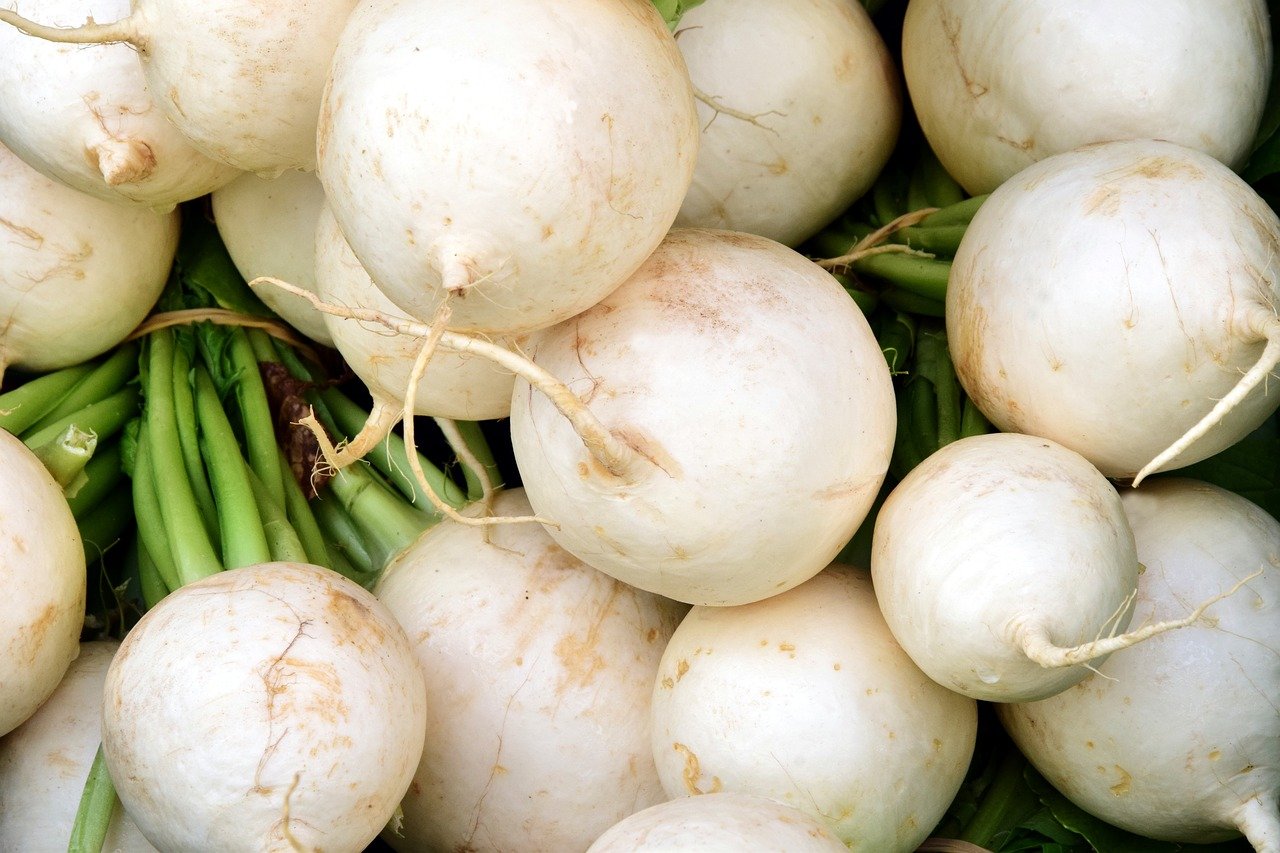
Daikon Radish Varieties at a Glance: Summer and Winter Radishes
Radishes can also be categorized according to the growing season. A distinction can be made between summer radishes and winter radishes.
- Summer radishes: Sow from April to July, harvest from May to August, elongated to spherical, red to white in color, juicy with a spicy heat, suitable for immediate consumption
- Winter radishes: Sowing from July to September, harvesting from October to December, good storage life due to thick skin and firm flesh, pungent taste
Summer Radishes/Daikon: Examples of Varieties
If you want to harvest fresh daikons in summer, you should opt for summer radishes. Here are some popular varieties:
- 'Ostergruß rosa': traditional, spindle-shaped variety with pink coloring, suitable for greenhouse and open field, harvest possible from April onwards
- 'Rex ': white, conical, vigorous and proven variety, hardly tends to furry
- 'Zürcher Markt': white and elongated variety with an aromatic taste
- 'Runder Weißer': white, round variety with a mild flavor, early harvest possible
- 'Hilds roter Neckarruhm': red, elongated variety, mild flavor and resistance to furry taste, also available as white variety 'Neckarruhm'
Winter Radishes: Storable Radish Varieties
If you want to enjoy winter radishes from your own garden in winter, you should also opt for a few storable varieties. Here is an overview of popular varieties:
- 'Blue Autumn and Winter': elongated variety with purple skin and white flesh, particularly easy to store and tasty
- 'Round Black Winter': conical variety with black skin and white flesh, spicy taste, can be harvested as early as September
- 'Noir Long Poids D'Horloge': elongated, black variety with a slightly spicy taste, delicious salted on bread
- 'Münchner Bier': white, round-pointed variety with particularly tender but firm flesh, can also be used as a summer radish when sown early

Want to know more about Daikon varieties?
In our library you will find information on the individual varieties with cultivation periods, tips on planting and harvesting. You will also find good and bad companion plants to help you plan a mixed crop.
View library nowGood and Bad Companion Plants
Daikon does not take up much space in the bed, nor does it need a lot of nutrients. This means it can simply be planted in harvested gaps in the bed during the growing season. In order to observe succession cropping, you should take a break from growing cruciferous plants in the same bed for at least four years. Otherwise diseases can be transmitted. Winter radishes as well as Radishes also get on well with many other crops and are therefore very suitable as a mixed crop partner. You can find out more about intercropping with cabbage with tips on crop rotation here in the article!
Table: Good and Bad Companion Plants For Daikon
| Good Companion Plants | Bad Companion Plants | |
|---|---|---|
| Beans | Kohlrabi | Arugula / Rocket |
| Black salsify | Lettuce | Chervil |
| Broccoli | Chinese cabbage | Courgette / Zucchini |
| Cabbage | Oregano | Cucumber / Gherkin |
| Carrots | Pak choi | Horseradish |
| Cauliflower | Parnship | Jerusalem Artischocke / Topinambur |
| Chard | Pea | Lettuce (Radicchio) |
| Collard greens | Soybean | Lovage |
| Common marigold | Spinach | Onion and spring onion |
| Cress | Strawberry | Turnip and swedish turnip |
Mixed cultivation with radish: examples & ideas
Here you can find ideas for your mixed culture with daicon and winter radishes.
Sowing Daikon Radishes: Tips for Sowing
Summer radishes should not be sown outdoors before April. If temperatures fall below 10 °C/50 °F for too long during germination, the plant is more likely to bolt later. In the greenhouse, seeds can be sown as early as mid-March. You can sow summer radishes until the end of July. Winter radishes are sown from July to the beginning of September.
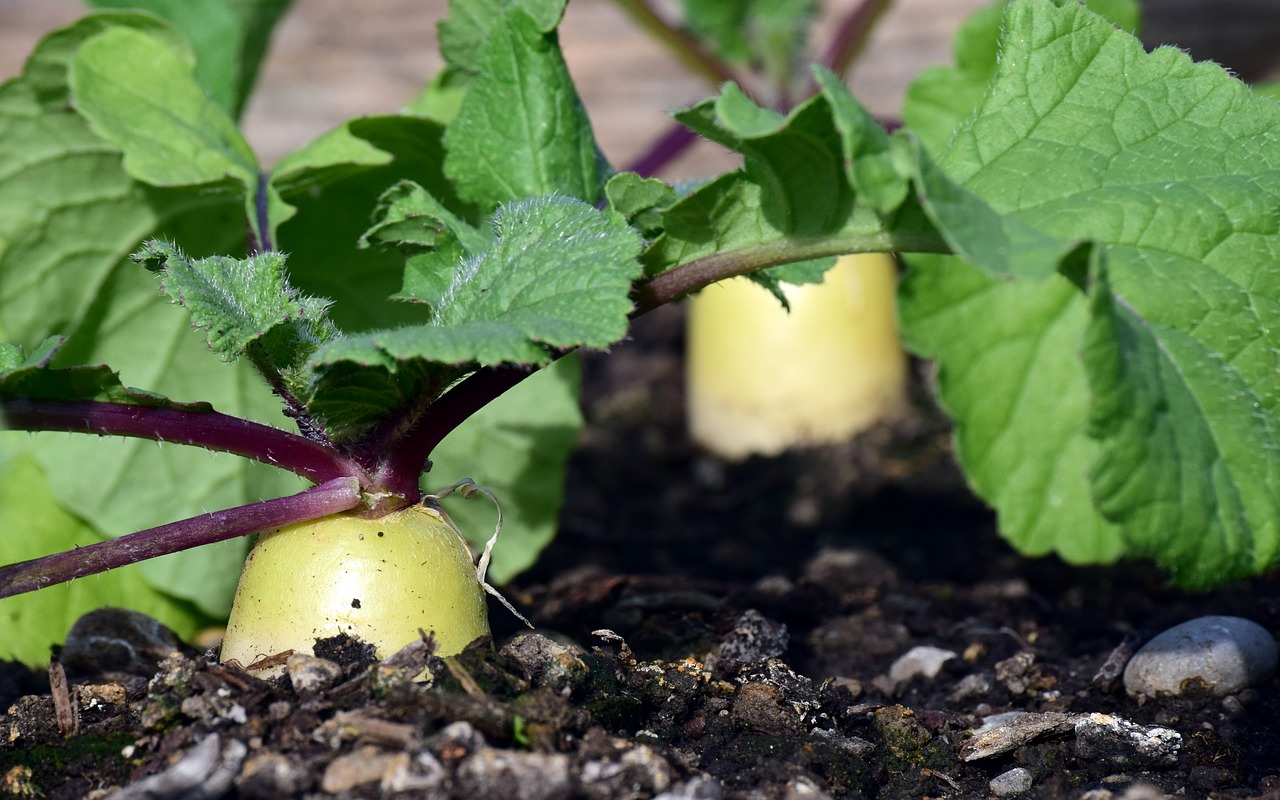
And This Is How Sowing Works:
Make a seed furrow 2 - 3 cm/0.8 - 1.2 in deep. The daikon seeds are placed every 10 to 15 cm/3.9 to 5.9 in. Do not forget to lightly press the seeds covered with soil so that they have contact with the surrounding soil particles. The rows should be 25 - 30 cm/9.8 - 11.8 in apart. Water your daikon seeds well at the end to ensure optimum germination. Depending on the temperature, the seeds will germinate after 10 - 14 days. The seedlings can be transplanted again no later than two weeks after emergence if they are too close together. However, this can easily damage the root, which will result in poor growth later on.
The Right Care and Fertilization
As daikons are medium feeders, you don't need to fertilize them excessively. It is perfectly sufficient to prepare your bed with compost. Too much nitrogen will cause nitrate to build up in the winter radishes, which can be harmful to your health. However, this property makes daikons a good successor crop for beds harvested in summer. Ensure that your plants are watered sufficiently. Otherwise it will quickly start to shoot, making the root furry and woody. As winter radishes prefer to grow in sandy soil that dries out quickly, a layer of mulch can reduce evaporation. This means that more water is stored in the soil and the water supply to the plants remains more even. Grass cuttings, comfrey or rhubarb leaves are suitable for this.
Harvest Time: How to Harvest Daikon Radishes Correctly
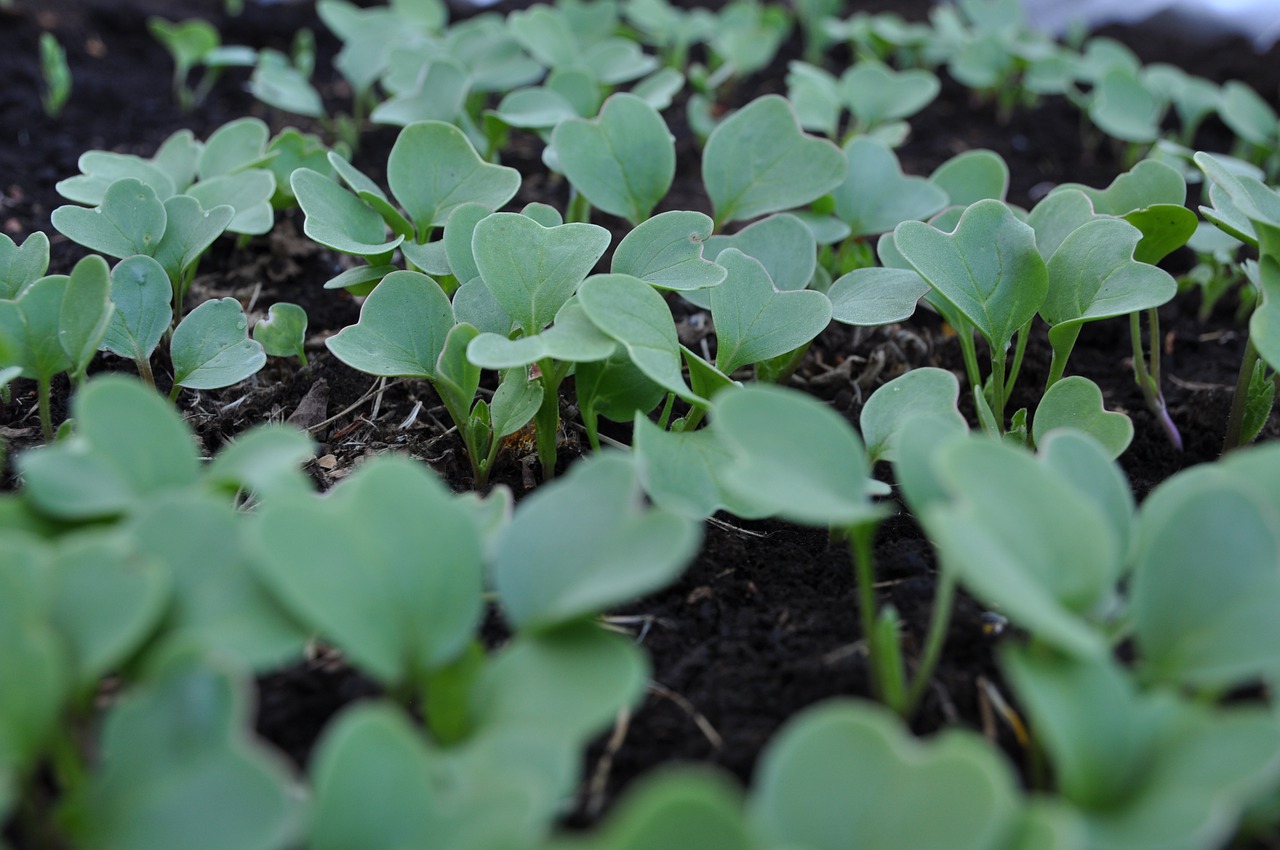
Harvesting and Storing Summer Radish
Summer radish is ready to harvest approx. 8 - 10 weeks after sowing. Depending on the sowing date, it can be harvested from April to August. But be careful: if you harvest your radish too late, it will quickly become furry or woody. It is therefore better to harvest a little earlier than too late! The entire plant is pulled out of the ground for harvesting. Summer radishes are usually eaten fresh. They will only keep for a few days in the fridge if they are wrapped in a damp cloth. Later they become soft and rubbery. However, they can also be fermented or frozen after cooking.
Harvesting Winter Radish Correctly
Winter radishes are ready to harvest after 13 - 15 weeks. Here too, harvest sooner rather than later. Harvesting takes place from October to December. Winter radishes can be kept for several weeks to months under good storage conditions. It is best to store the radishes in a dark place, such as a cellar or garage, in a box filled with sand. The temperature should be as low as possible, but not below freezing. The sand should be slightly damp, but not wet. Otherwise the radishes will start to mold or rot. In addition to the roots, which are traditionally harvested, leaves, pods and sprouts are also edible.
Propagate Daikon Radish: Obtaining Seeds
To obtain seeds from your winter radish, the daikon is not harvested but left in the bed until it flowers. Later, small pods form, which contain the seeds. As already mentioned, these pods are also edible! As soon as the pod has dried and hardened, you can harvest the seeds. However, don't wait too long, otherwise the seeds will sow themselves. Leave the harvested seeds to dry in a warm place for a few days before storing them in a jar. However, it should be noted that the sowing success of self-harvested seeds leaves much to be desired for many hobby gardeners. Often, home-grown radishes grow poorly or taste too pungent.
Diseases and Pests
Below you will find an overview of the most common diseases and pests of radishes:
Earth Fleas
Daikons are frequently infested by earth fleas. These eat small holes in the leaves of the radish plants and thus weaken its growth. However, there is a simple solution against fleas. The pests particularly like dry soil with no cover. By adding a layer of mulch to the soil around your plants, you will also repel earth fleas. This layer of mulch also helps to keep the soil evenly moist, which helps to produce tender and juicy radishes.
Cabbage Fly and Cabbage White Butterfly
Other uninvited guests in your patch may include cabbage fly or cabbage white butterfly. The name can be misleading, but as cabbage plants belong to the same plant family, they can be attacked by the same pests. For both pests, it helps to apply a close-meshed crop protection net to prevent the pests from laying their eggs. If the plants are already infested, it helps to collect the caterpillars of the cabbage white butterfly and check the undersides of the leaves for eggs. Infest leaves are then simply removed. Dusting the plant with rock flour, ash or soft soap broth helps to control the cabbage fly. Deep planting and mounding the radish plant also helps against the fly. A mixed crop with tomatoes also repels the cabbage fly as a preventative measure. You can read more about combating and preventing cabbage whitefly in this article.
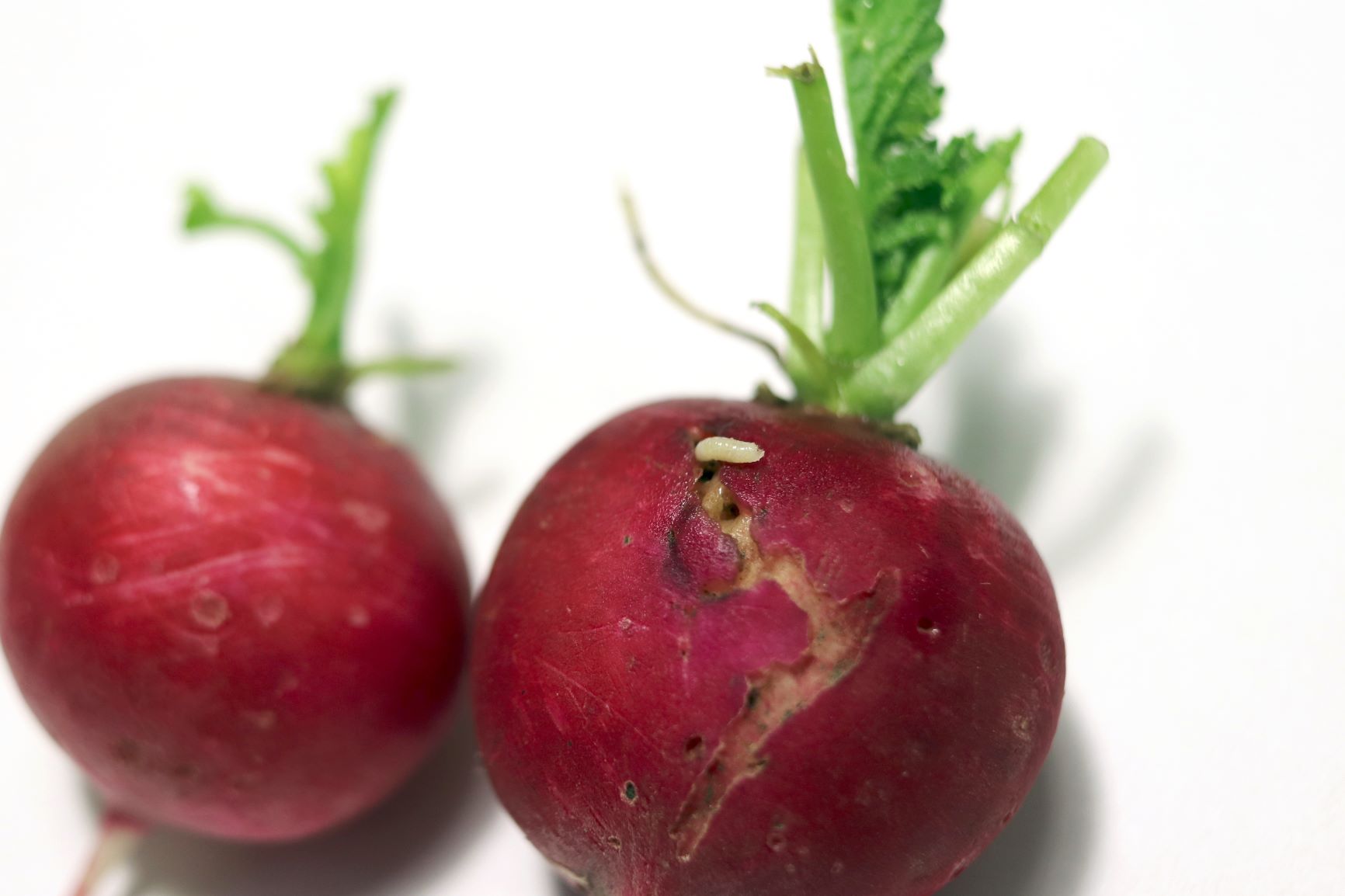
Radish Blackening
Black radish blight can also occur. This is a fungus that penetrates the radish root via small injuries. The damage appears as gray-black discoloration on the radish. Later, the fungus penetrates the entire root and it becomes rotten. The fungus mainly occurs on soils with a high pH value. Waterlogging and dense, clayey soils also favor infestation. Radishes should not be grown in such locations. Sick plants should be dug up and disposed of in the residual waste.
I hope I have been able to answer your questions about growing radishes in your own bed. If you have any questions or comments, please write to us at magazin@fryd.app. Do you want to get helpful gardening tips all year round and plan your own beds optimally? Then register here or download the Fryd app for Android or iOS.
Fryd - Your digital bed planner
Cover picture by ghostwor1d on Pixabay
Isabell
Current Topics in the Community
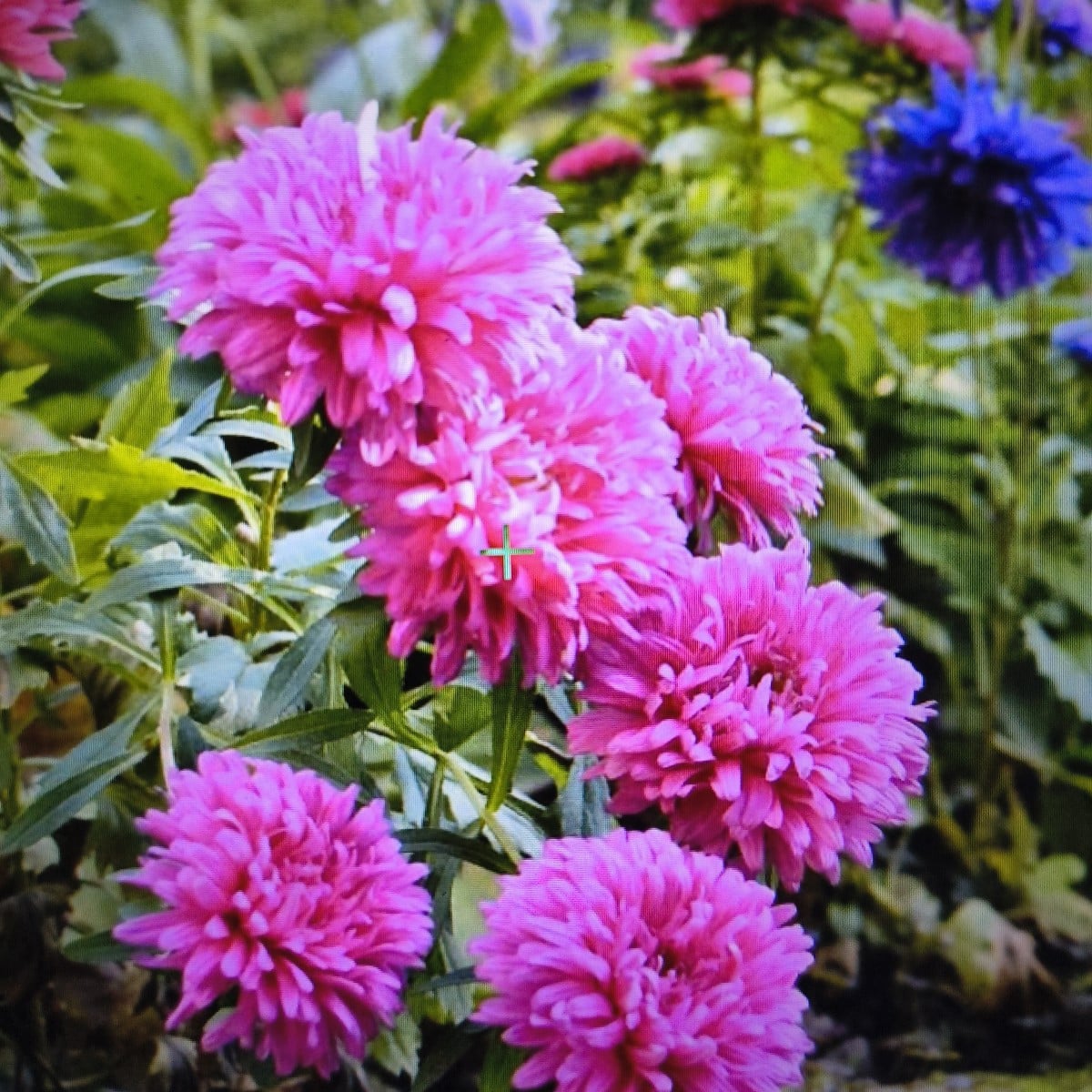
This is my new post on fryd
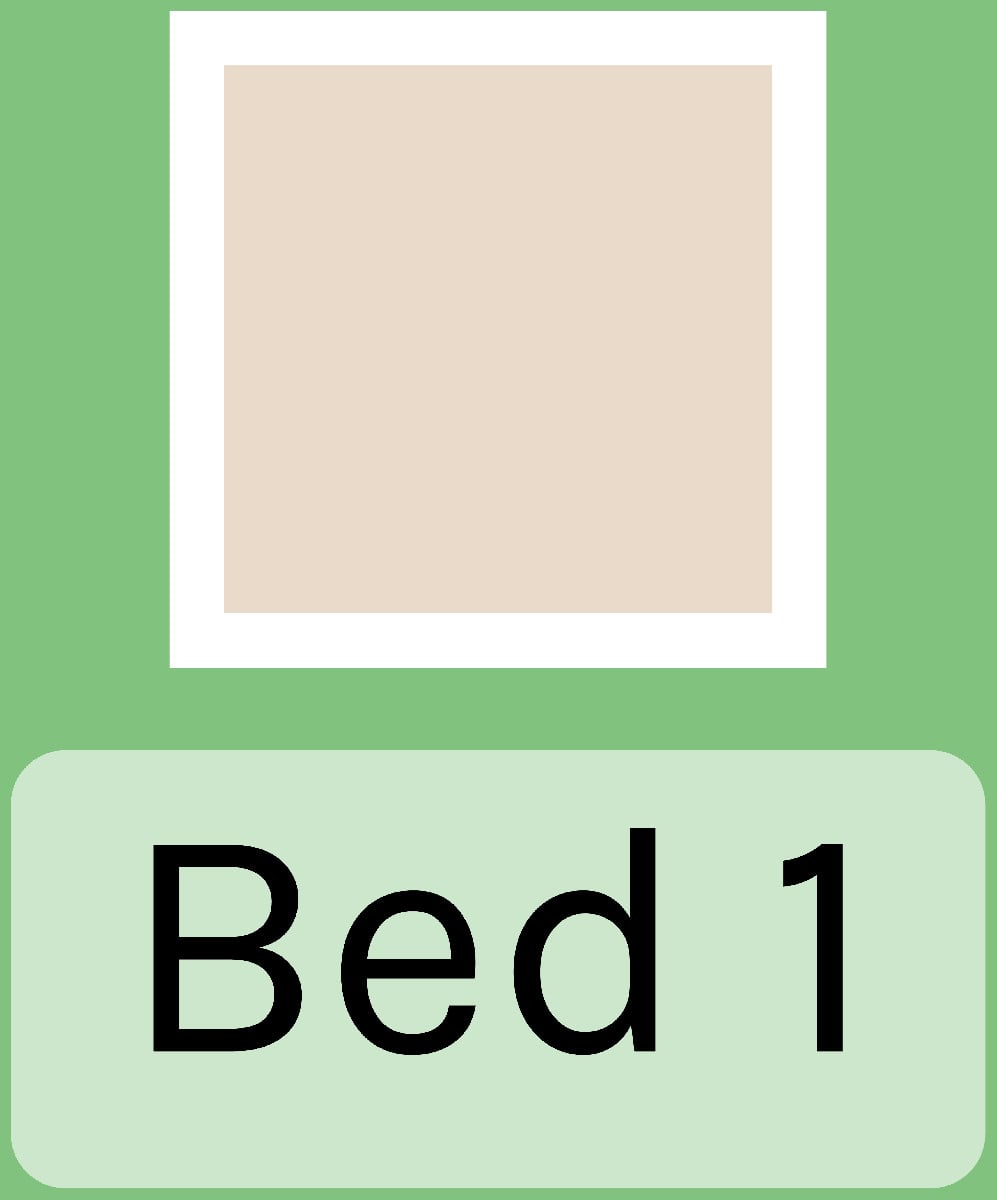
My plan shere in community
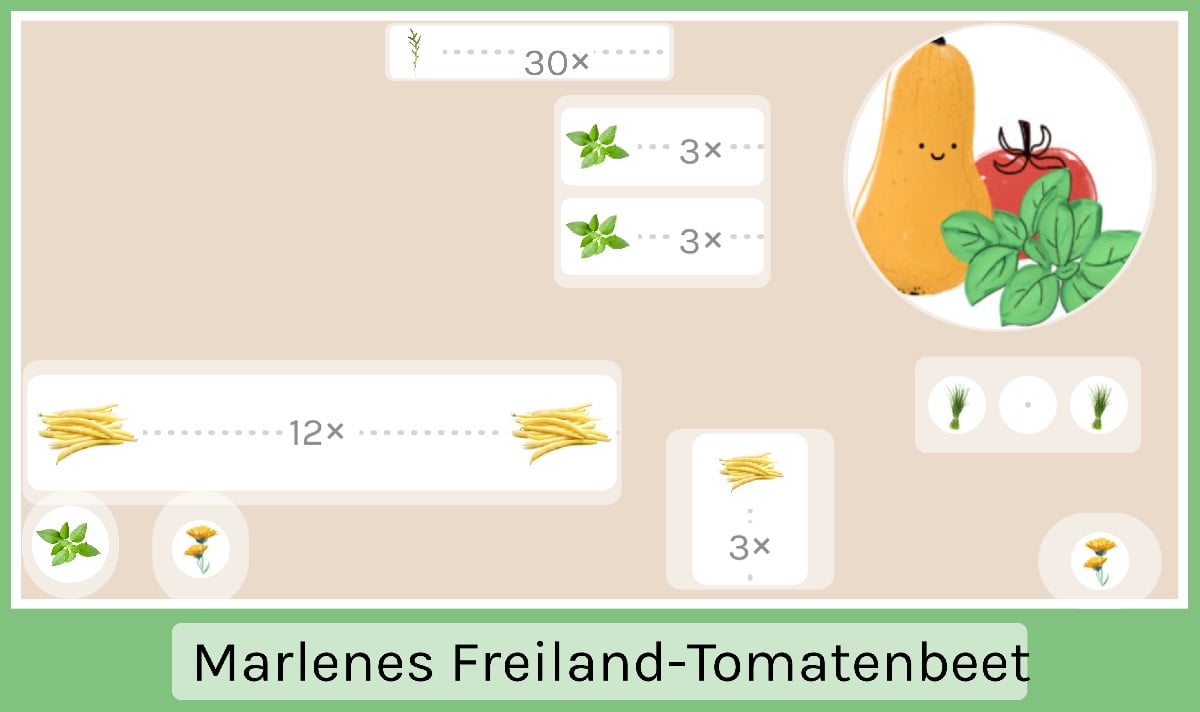
Hi
Popular Articles

Companion Plants for Carrots: What (Not) to Plant With Carrots

Companion Plants for Celery : What (Not) to Plant With Celery?

Strawberry Types: List of Best Strawberry Varieties

Companion Planting With Strawberries: Companion Plants and Planting Plan

Basil Varieties & Types at a Glance

What to Plant With Cabbage: Good and Bad Companion Plants

Fertilizing Strawberries: Home Remedies & Natural Fertilizers at a Glance

Growing Sweet Potatoes: Tips on Cultivation & Companion Plants

Companion Plants for Kitchen Herbs: Chives, Parsley & Co

What Herbs Can Be Planted Together?
FAQ
When is winter and summer radish sown?
Summer radishes can be sown between April and July, while winter radishes are sown from July to September.
What is the best location for daikons?
Daikon prefers sunny to semi-shady locations with loose soil and a high humus content.
When is winter and summer radish ready to harvest?
Summer radishes after approx. 8-10 weeks, winter radishes after 13-15 weeks.
Summer radishes can be eaten fresh or stored in the fridge, winter radishes can keep for several months if stored in sand at cool temperatures.
What are good and bad companion plants?
Good companion plants for radishes include broccoli, cauliflower, beans, Chinese cabbage, peas, strawberries, kohlrabi, carrots, oregano, parsnips and salsify. You should not plant horseradish, rocket or radicchio next to radishes, for example.